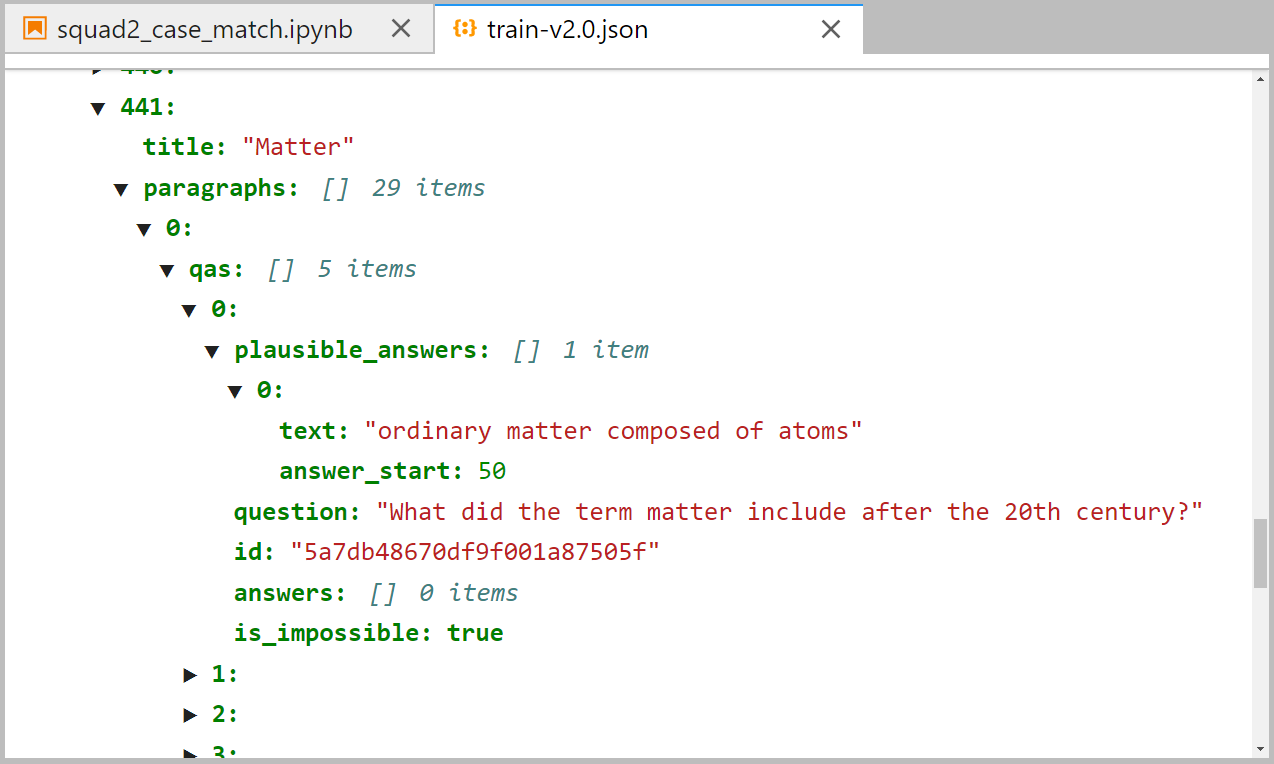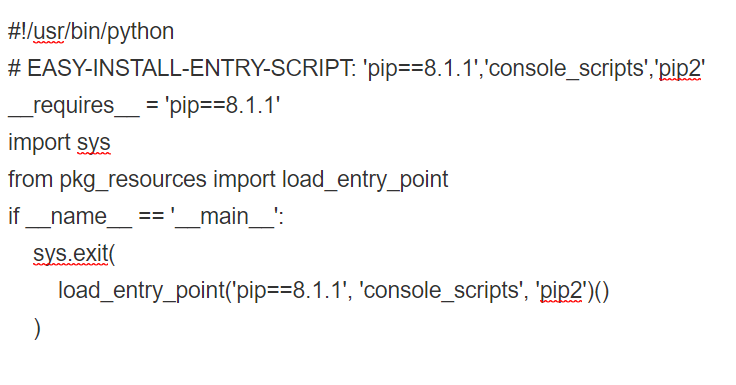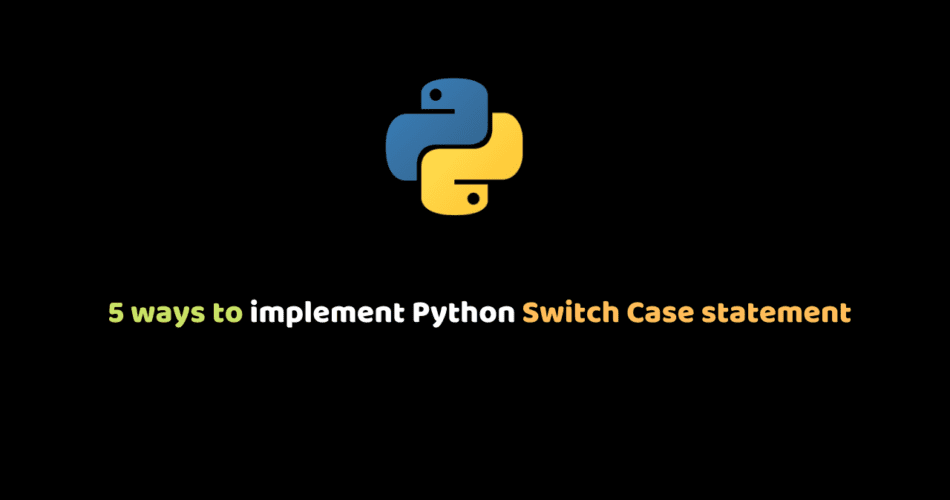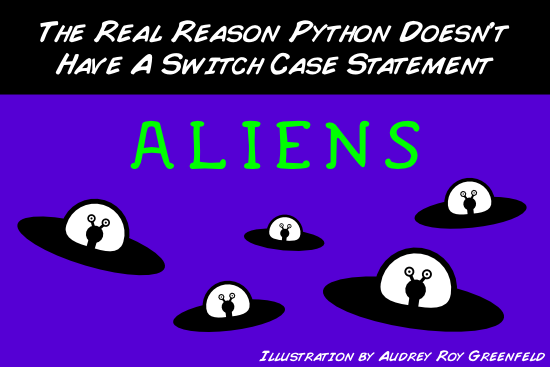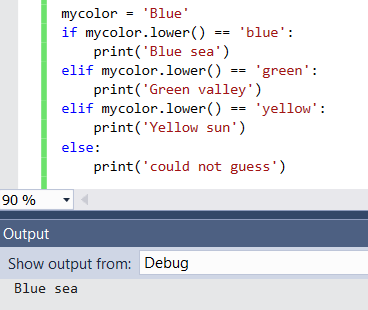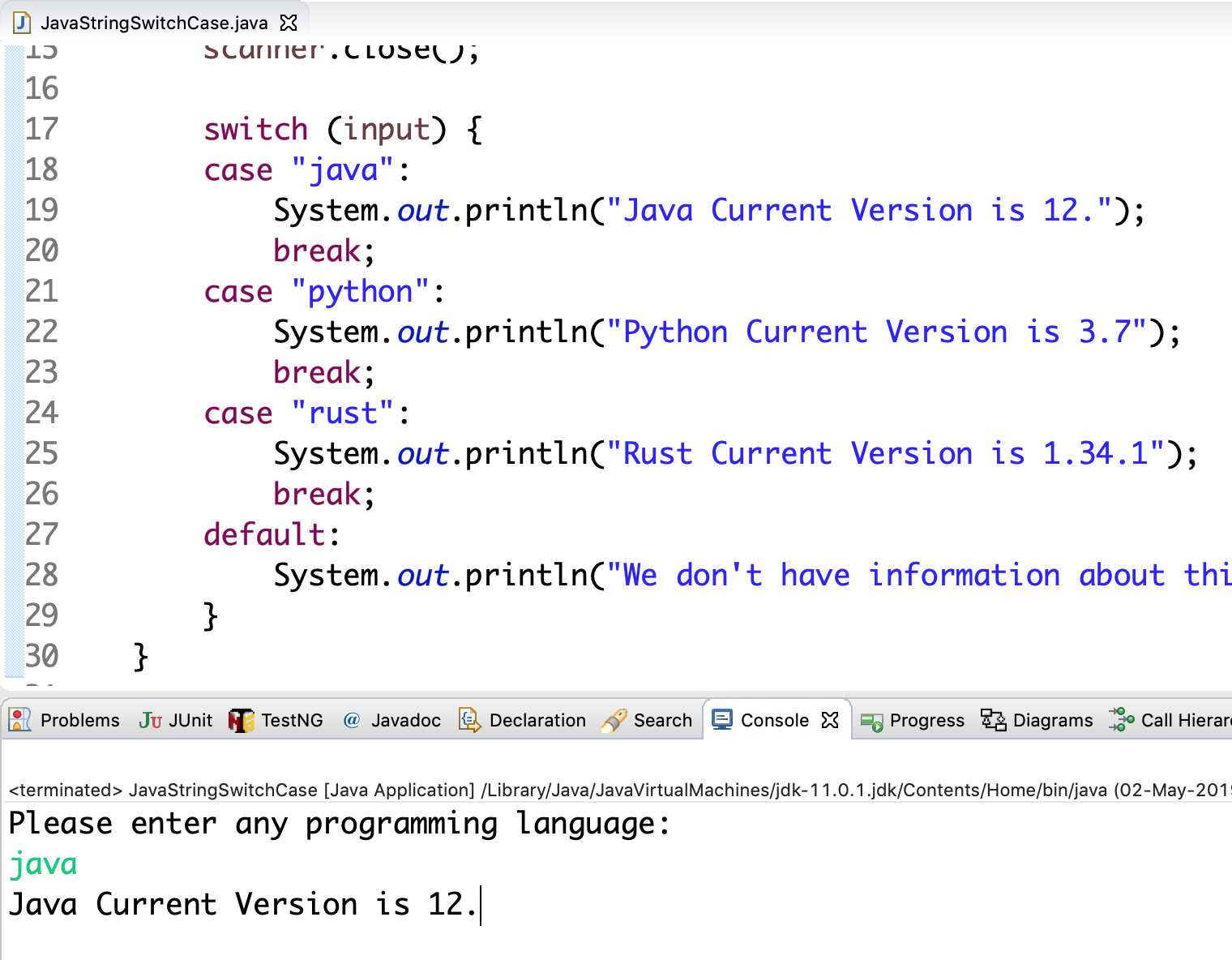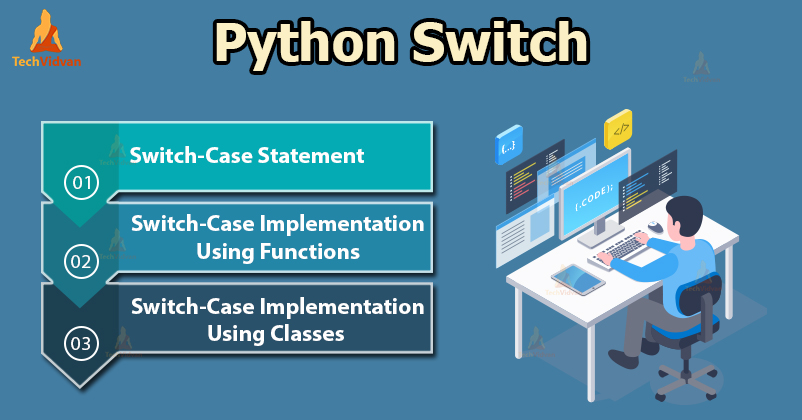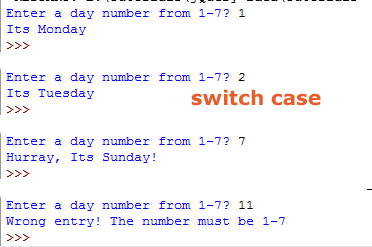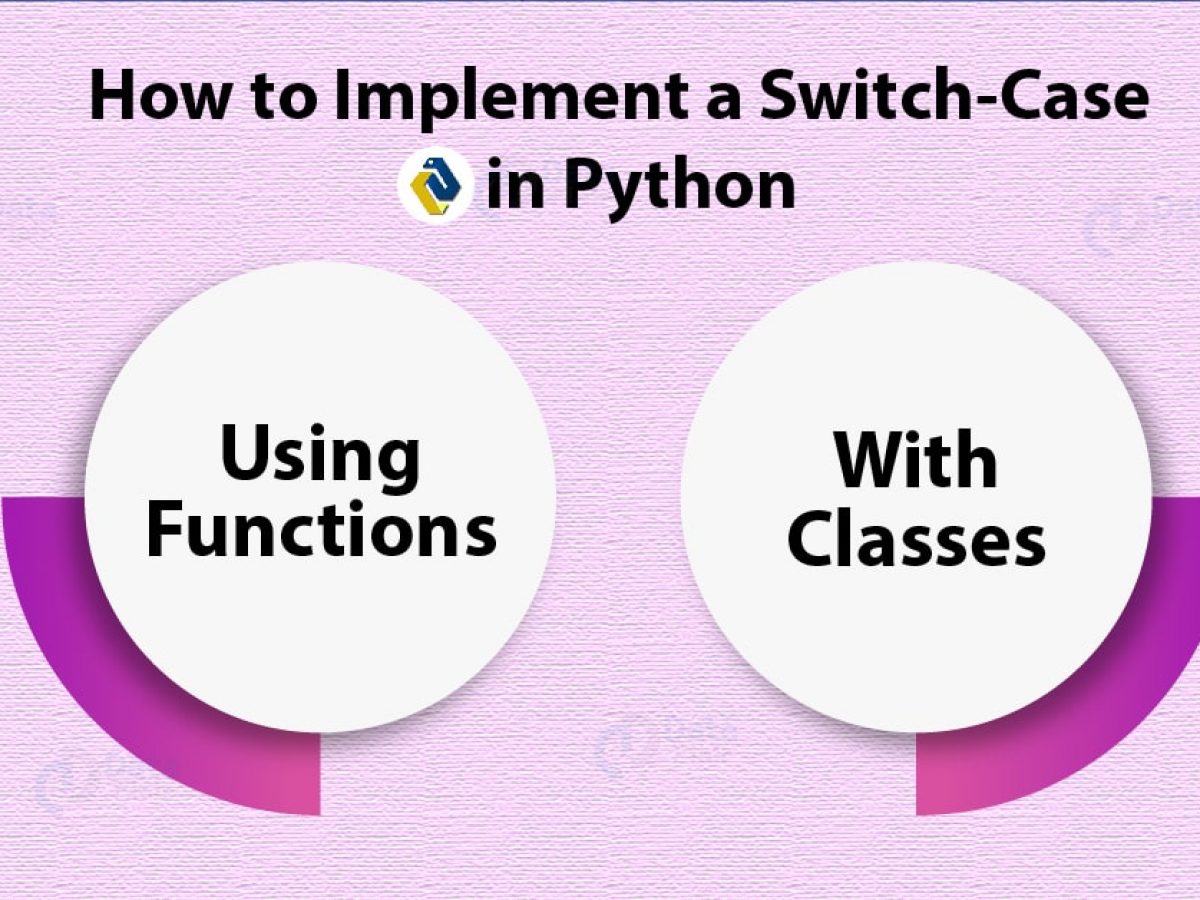case 5 : print 'viernes' if s. We can implement this feature with the same flow and functionality but with different syntax and. But Python doesnt care about making life easy for the parser, or it would use tokens rather than functional whitespace. Data Structures• Dictionary mapping using Python Classes: We can also use Python classes as an alternative way to implementing switch-case statements. Yeah, I know what you might be thinking by now. First, there are no break statements. The statements that form the body of the function start at the next line, and must be indented. What are Conditional Statements in Python? But if you look at it from an ease of readership and comprehension, having more than one or two sets of if statements can already begin to clog up our code. Code Line 15: The flow of program control exits the if Statement it will not get to the else Statement. Switch in Other Languages c, Java,. Instead, it is usually more straight-forward to loop over a copy of the collection or to create a new collection: 0 1 2 3 4 The given end point is never part of the generated sequence; range 10 generates 10 values, the legal indices for items of a sequence of length 10. To check the value, you check the value of the object. Switch-case statements are a strong tool for control in programming. The switch calls the get method on the dictionary object which returns the function matching the argument and invokes it simultaneously. case 5, True : print 'viernes' if s. The sequence and length of these arguments is entirely up to you and there is no restriction in Python. "if condition" — It is used when you need to print out the result when one of the conditions is true or false. Explanation: Dictionary in Python is an unordered collection of key and value pairs. Solutions for Python Switch-Case function: Dictionary Mapping: As we know that Python does not have a simple switch-case statement here one way out would be to implement an if-elif-else ladder. In this comprehensive guide, you have seen the basics of switch-case statements along with their general syntax. More precisely, all variable assignments in a function store the value in the local symbol table; whereas variable references first look in the local symbol table, then in the local symbol tables of enclosing functions, then in the global symbol table, and finally in the table of built-in names. If this is for better or worse I am not going to dabble too much into myself. get inp, -1 Output: input a character : b The result for inp is : 123 In the Python Switch Case example, above we take the user input to print our result; also, the -1 is the default value if there are no keys that match the information. Many languages have a SwitchStatement Aka. The default code will be executed in case there is no match found. Have a look at the code below. Switch Statements: A Refresher A switch statement lets you select one of a set of code blocks to run. Same thing, really, but a bit nicer in Python. Otherwise, nothing will happen. There are ways to handle this behavior but doing so is outside the scope of this tutorial. Let me begin by showing you how a switch case statement functions in so that you know what to expect in the switch case statement; although it could be different in the way they have implemented, the concept remains the same. Conclusion Although python does not have an in-built switch-case construct, but we can construct it using dictionary mapping, class and if-elif-else ladder. Python language does not provide any inbuilt switch statements. for Statements The statement in Python differs a bit from what you may be used to in C or Pascal. Let's write a program that acts as a switch case in Python. But as we know Python does not have this. Python language does not have any switch statements, but we can implement a similar functionality using Python Dictionary. It is also possible to use classes to implement switch cases in Python, and are quite easy as well. Else if the input is 3 march will be printed, else it will print the incorrect option. Python Switch-Case Statement First, let us understand how a switch-case statement works. Replacements of Switch in Python In this section of the tutorial, you will look at three different ways to implement a switch in Python. This is because it checks the first condition if condition in Python , and if it fails, then it prints out the second condition else condition as default. Code Line 11: The line print st will output the value of variable st which is "x is greater than y", When "else condition" does not work There might be many instances when your "else condition" won't give you the desired result. All the keyword arguments passed must match one of the arguments accepted by the function e. Instead of executing code for each condition separately, we can use them with a single code. Here both the variables are same 8,8 and the program output is "x is greater than y", which is WRONG. Code Line 8: The variable st is set to "x is less than y. James has written hundreds of programming tutorials, and he frequently contributes to publications like Codecademy, Treehouse, Repl. Solo funciona para comparaciones de igualdad pues es la manera en la que trabajan los diccionarios. Given how many have a extreme distaste for ternary expressions or have bagged on Perl for being hard to read when the same sort of trailing conditionals are used, I guess you have to create a new word for the concept in order to avoid the torches and pitchforks. We convert this value to a number so we can use it later in our program. This is where the match statement gets really powerful. Using plain predicates, it may be used to deal with non scalar types C. And at last call the switch method. If none of the case matches with the input argument, then the default block statement is executed. Ventajas:• that can efficiently replace a switch statement and makes the code more transparent, easy-to-understand, and meticulous, at the same time. Here we discuss syntax, flowchart, and working of python switch statement along with examples and implementation. Example 3 Implementation of switch statement using Dictionary mapping of functions. Using Lambda Functions for Dynamic Operations In Python, Lambda functions are very popular. get i, "Invalid day of the week" This make calls to week with different values to find out the day of the week. Algorithms• Switch-case statement may be a powerful programming feature that permits you control the flow of your program supported the worth of a variable or an expression. It works as a switch construct in python. Here the most important thing is that you have to declare if-elif-else ladder. get 10, 'Bad day' Output If you run the above code, then you will get the following result. These are very easy and intuitive and use simple Python concepts like functions, classes, dictionaries, etc. まとめ 今回はPythonのswitch文の代用について解説してきました。
"else condition"- it is used when you want to print out the statement when your one condition fails to meet the requirement• Positional-Only Parameters Looking at this in a bit more detail, it is possible to mark certain parameters as positional-only. That usually gives me extra expressiveness while staying easily readable. Y sus inconvenientes:• switch 10 The output will be: march april Invalid month In the Switch Case example above First, create a class called PythonSwitchStatement to define a switch method. but i know for a fact that even relatively simple C compilers generally have a variety of techniques for implementing switch statements, often chaining together multiple techniques. If the argument matched with any of the cases, then the corresponding block statement is executed, and the control comes out of the switch statement at the break statement. Y si no te gusta, por supuesto puedes ignorarla o criticarla. Switch cases are mainly used to execute a different block of codes in relation o the results of expression during the program run time. Python Switch Statement: Calling Functions We can use this syntax to. Rather, we can use a dictionary to map cases to their functionality, this Pythonic way to implement a switch statement will use the powerful. So you advocate for stagnation? So, now to the main part, How to get the switch statement in Python? Languages• Jobs• They are anonymous functions functions without a name that are used to perform operations in a single line or expression. An if … elif … elif … sequence is a substitute for the switch or case statements found in other languages. Es necesario definir las funciones o, si son sencillas, expresiones lambda como valores del diccionario. The get method takes the input argument and compares it with all the keys in the dictionary and returns the corresponding value. offer switch statements, but the Python language does not have any switch statements. The actual parameters arguments to a function call are introduced in the local symbol table of the called function when it is called; thus, arguments are passed using call by value where the value is always an object reference, not the value of the object. This lets you filter values within each case statement: Sold! As we all know in the dictionary, we have key-value pairs. Python if Statement Syntax: if expression Statement else Statement Python if. I use and love ternaries, but I treat them with kid gloves. En las ramas en las que no queremos ejecutar nada de momento ubicaremos la sentencia pass que, como sabes, no ejecuta nada en Python. Loop statements may have an else clause; it is executed when the loop terminates through exhaustion of the iterable with or when the condition becomes false with , but not when the loop is terminated by a statement. This is though true for almost anything. In most cases, this happens when you have to justify more than two statement or condition in a program. case 2, True : print 'martes' if s. We saw two types of implementations in Python switch, first, we used dictionary mapping to implement switch with functions and then implemented the switch using a class. On the surface, everything looks quite simple. ちなみに、このコードはC言語で書かれたswitch文です。
